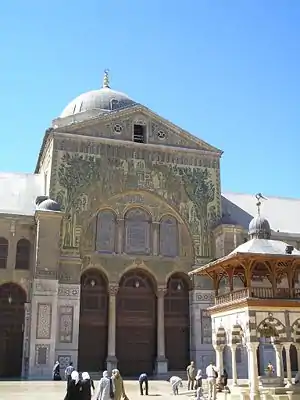706
Year 706 (DCCVI) was a common year starting on Friday (link will display the full calendar) of the Julian calendar. The denomination 706 for this year has been used since the early medieval period, when the Anno Domini calendar era became the prevalent method in Europe for naming years.
| Millennium: | 1st millennium |
|---|---|
| Centuries: | |
| Decades: | |
| Years: |
| 706 by topic |
|---|
| Leaders |
|
| Categories |
|
| Gregorian calendar | 706 DCCVI |
| Ab urbe condita | 1459 |
| Armenian calendar | 155 ԹՎ ՃԾԵ |
| Assyrian calendar | 5456 |
| Balinese saka calendar | 627–628 |
| Bengali calendar | 113 |
| Berber calendar | 1656 |
| Buddhist calendar | 1250 |
| Burmese calendar | 68 |
| Byzantine calendar | 6214–6215 |
| Chinese calendar | 乙巳年 (Wood Snake) 3402 or 3342 — to — 丙午年 (Fire Horse) 3403 or 3343 |
| Coptic calendar | 422–423 |
| Discordian calendar | 1872 |
| Ethiopian calendar | 698–699 |
| Hebrew calendar | 4466–4467 |
| Hindu calendars | |
| - Vikram Samvat | 762–763 |
| - Shaka Samvat | 627–628 |
| - Kali Yuga | 3806–3807 |
| Holocene calendar | 10706 |
| Iranian calendar | 84–85 |
| Islamic calendar | 87–88 |
| Japanese calendar | Keiun 3 (慶雲3年) |
| Javanese calendar | 598–599 |
| Julian calendar | 706 DCCVI |
| Korean calendar | 3039 |
| Minguo calendar | 1206 before ROC 民前1206年 |
| Nanakshahi calendar | −762 |
| Seleucid era | 1017/1018 AG |
| Thai solar calendar | 1248–1249 |
| Tibetan calendar | 阴木蛇年 (female Wood-Snake) 832 or 451 or −321 — to — 阳火马年 (male Fire-Horse) 833 or 452 or −320 |

The Great Mosque of Damascus (Syria)
Events
Byzantine Empire
- February 15 – Emperor Justinian II presides over the public humiliation of his predecessors, Leontios and Tiberios III, and their chief associates in the Hippodrome of Constantinople, after which they are executed. Patriarch Kallinikos I is also deposed, blinded and exiled to Rome, and succeeded by Kyros.[1]
Europe
China
- July 2 – Emperor Zhong Zong has the remains of his mother and recently deceased ruling empress Wu Zetian, her son Li Xian, her grandson Li Chongrun, and granddaughter Li Xianhui, all interred in the same tomb complex as his father and Wu Zetian's husband Gao Zong, outside Chang'an, known as the Qianling Mausoleum, located on Mount Liang, which will then remain unopened until 1960.
Religion
- Berhtwald, archbishop of Canterbury, is obliged by the pope's insistence to call the Synod of Nidd (Northumbria).
- Caliph Al-Walid I commissions the construction of the Great Mosque of Damascus (Syria).
Births
Deaths
- February 15 – Leontios, Byzantine emperor
- February 15 – Tiberios III, Byzantine emperor
- Gisulf I, duke of Benevento
- Kallinikos I, patriarch of Constantinople (or 705)
- Shenxiu, Chinese Zen Buddhist patriarch
- Zhang Jianzhi, official of the Tang Dynasty (b. 625)
References
- Venning, Timothy, ed. (2006). A Chronology of the Byzantine Empire. Palgrave Macmillan. p. 190. ISBN 1-4039-1774-4.
This article is issued from Wikipedia. The text is licensed under Creative Commons - Attribution - Sharealike. Additional terms may apply for the media files.